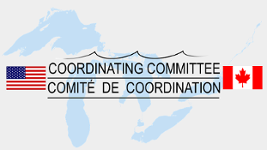The Great Lakes – St. Lawrence River System extends from the headwaters of tributary streams in northern Minnesota and western Ontario, to the Gulf of St. Lawrence in the Atlantic Ocean. The drainage basin covers more than 1,000,000 km2 (400,000 square miles) from Duluth, MN to Trois Rivières, QC. Eight U.S. states and two Canadian provinces border this vast system of shared waters. Joint use of these waters by the people of Canada, the United States, First Nations and Native Americans, requires internationally-coordinated basic hydraulic and hydrologic data.
Prior to 1953, responsible Federal agencies in Canada and the United States independently collected and compiled data pertaining to the hydraulic and hydrologic characteristics of the Great Lakes and St. Lawrence River, with only superficial and informal coordination of some of the data. As a consequence, the same basic data developed on different bases and datum planes, were often not compatible. Remedying this situation required a concerted effort to study and evaluate the data used by both countries.
With the advent of extremely high lake levels in 1952 and the impending hydroelectric power and navigation developments in the St. Lawrence River system, Canadian and U.S. agencies recognized that continued independent development of basic data would be illogical. They realized that early agreement on the hydraulic and hydrologic characteristics of the system was of paramount importance. Therefore, the U.S. Army Corps of Engineers and the Canadian Departments of Transport, Mines and Technical Surveys and Resources and Development, opened negotiations early in 1953 for the purposes of establishing a basis for development and acceptance of identical data by both countries. The negotiations culminated in a meeting of representatives of the interested agencies in Ottawa on 7 May 1953.
At that meeting, the Coordinating Committee on Great Lakes Basic Hydraulic and Hydrologic Data was established.
Last revised: 2017-09-27
 Great Lakes Coordinating Committee
Great Lakes Coordinating Committee